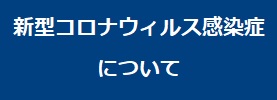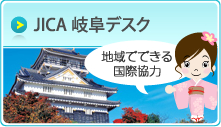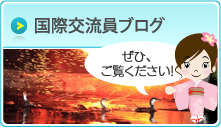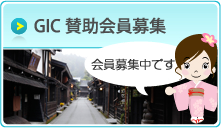 |
(2023.01.10) |
Happy New Year everyone! For the first English post of 2023, I want to take a look back at last summer and one of Gifu Prefecture's most beautiful places.
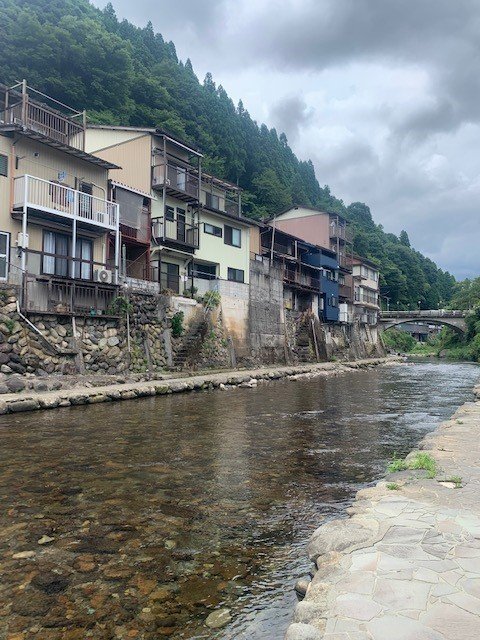 Gujo Hachiman is a town in Gifu Prefecture that I was very excited to visit. When I found out that I would be moving to Gifu, I researched some of the places I could visit and wanted to learn more about the prefecture. I found videos online about Gujo Hachiman, known as the water city. Gifu Prefecture is known as the land of clear water, and our mascot, Minamo-kun is a water sprite. (Photo: Yoshida River.)
Gujo Hachiman is a town in Gifu Prefecture that I was very excited to visit. When I found out that I would be moving to Gifu, I researched some of the places I could visit and wanted to learn more about the prefecture. I found videos online about Gujo Hachiman, known as the water city. Gifu Prefecture is known as the land of clear water, and our mascot, Minamo-kun is a water sprite. (Photo: Yoshida River.)
In the summer, I was finally able to visit the city I had seen so many photos of online, and I was really excited to see the beautiful clear waters flowing through Gujo Hachiman's intersecting rivers. The Yoshida River and the Kodara River meet, and this spot is popular for swimmers, paddlers, and fishers alike during the summer months. I paddled at this spot, and the water was cool and refreshing during the hot August day, and some local children were also having fun in the water. The Nagara River also flows through Gujo Hachiman, and continues its journey down to Gifu City. (Photo: Stream off the main street.)

As well as these three rivers, Gujo Hachiman has other stunning water features that show how locals have lived their lives. There are numerous grates with flowing water along the sides of the roads, and you can even see koi fish swimming along them. In addition, there is small canal diverted upstream from the Yoshida River through a residential area, and this has become one of Gujo Hachiman's most famous places. There is a path along the canal where you can take a stroll, and the area is called Igawa Ko Michi. Local people wash 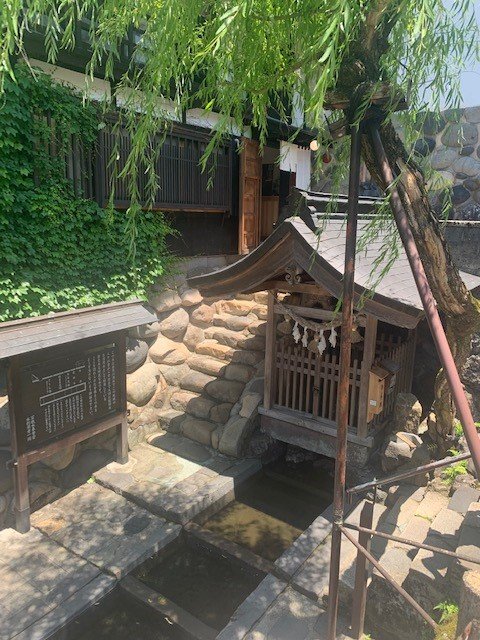 vegetables and laundry in this clear water, and they all band together to maintain the area. Sogo Sui Shrine is another popular destination for tourists. This small shrine can be found next to the river and has a water spring. (Photo: Sogo Sui Shrine.)
vegetables and laundry in this clear water, and they all band together to maintain the area. Sogo Sui Shrine is another popular destination for tourists. This small shrine can be found next to the river and has a water spring. (Photo: Sogo Sui Shrine.)
If you want to see the amazing townscape from above, look no further than Gujo Hachiman Castle, which is currently under renovation and will be until late March 2023, so it will be open in time for the cherry blossom season! I was able to visit it before the closure, and the panoramic views down into the valley were astonishingly beautiful. It was also lovely to be able to see the flow of all the rivers and where they intersect from above. The castle itself has a rich history; it was first built in 1559 by the local samurai lord. But, as with many Japanese castles, it was reconstructed following destruction in the early Meiji period (1868-1912), after the samurai warlord class was abolished, so castles no longer had a purpose in governing areas. It was then rebuilt in 1933, uniquely using wood instead of concrete. Inside, as well as the viewing platform there are exhibitions showing items from the time of the samurai, such as swords and maps.


(Photos: Gujo Hachiman castle and the view from the castle's observatory)

As well as man-made attractions, another natural attraction is located just outside of Gujo Hachiman. Namely, Otaki Cave, nestled into the mountains. A small cable car carries you to the limestone cave's entrance, and you can proceed inside. The coolness inside the cave contrasted the summer heat, and cold water ran down the walls. The walking route inside the cave includes lights and stairs, but may be a little difficult to navigate for some people as it can be slippery. Inside, you will find a 30m waterfall, the tallest underground waterfall in Japan, and the stalactites have unique shapes. (Photo: Otaki cave stalactites.)
If you've been to a restaurant in Japan, you've probably seen the ultra-realistic, yet fake foods in the store window, advertising items on the menu. In fact, these famous items originated in Gujo Hachiman! In Japanese they are called サン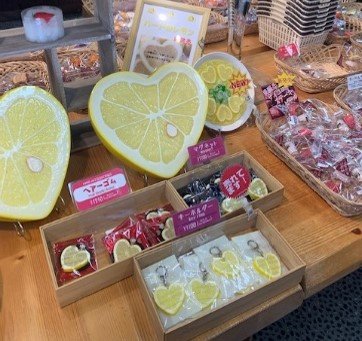 プル, "sanpuru", from the English word "sample". Takizo Iwasaki (1895-1965) is credited with their creation in the 1930s, and they have been a staple in Japanese restaurants ever since. Originally made from wax, today's samples are made from plastic, so make sure not to eat them, no matter how real they appear! The company Iwasaki set up in Gujo Hachiman still occupies a large share in the food sample market, with 60% being made there, and so the town is known as the food sample capital! There are multiple shops and workshops where you can buy or
プル, "sanpuru", from the English word "sample". Takizo Iwasaki (1895-1965) is credited with their creation in the 1930s, and they have been a staple in Japanese restaurants ever since. Originally made from wax, today's samples are made from plastic, so make sure not to eat them, no matter how real they appear! The company Iwasaki set up in Gujo Hachiman still occupies a large share in the food sample market, with 60% being made there, and so the town is known as the food sample capital! There are multiple shops and workshops where you can buy or 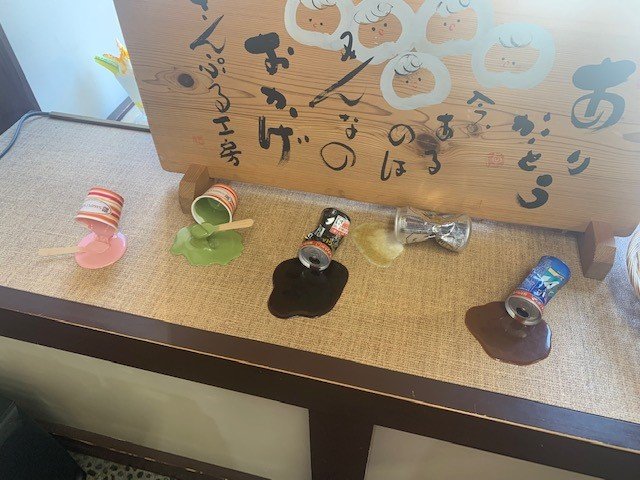 make the samples, and the one I visited was Sample Kobo. There are a plethora of samples you can buy, including magnets, keyrings and even memo holders! They have fruit, dango, sushi, ice cream and event spilt drinks! (Photos: Samples for sale as souvenirs.)
make the samples, and the one I visited was Sample Kobo. There are a plethora of samples you can buy, including magnets, keyrings and even memo holders! They have fruit, dango, sushi, ice cream and event spilt drinks! (Photos: Samples for sale as souvenirs.)
While these food samples are a more modern staple of Gujo Hachiman, the town is also famous for the traditional Gujo odori, or Gujo dance, which was added to the UNESCO's Intangible Cultural Heritage List in late 2022! This list is designed to help safeguard the heritage and customs of places so that these traditions are not lost in modern times. Gujo odori is part of Buddhist festival obon, which takes place mostly in mid-August. Obon celebrates ancestors, as their spirits are believed to return home temporarily to visit their descendants during this time. 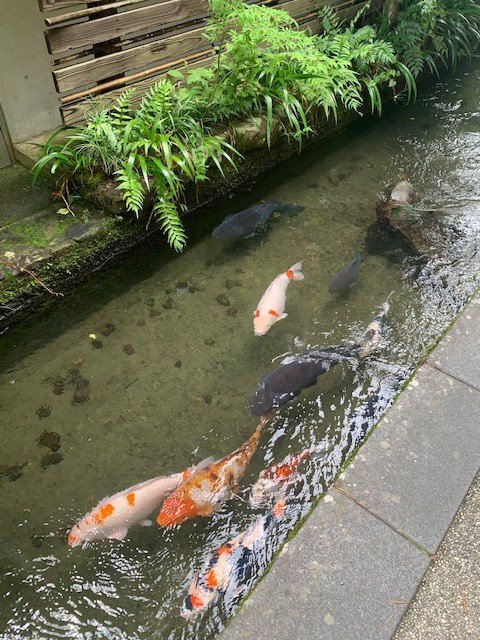 Lanterns are hung and offerings are given at household altars. Bon odori, like Gujo odori are performed in multiple places, but Gujo odori is seen as one of the three main bon odori in Japan. It is held over 30 festive nights from mid-July to early September, and during the four main nights of obon in mid-August, participants dance all night, from sunset until sunrise. Many people wear yukata, traditional dress that resembles a kimono, but is thinner for the summer heat. The dancing is done in a circle, and in the middle musicians and singers perform in a float. While the history of Gujo odori is unclear, it seemed to originate 400 years ago, around the beginning of the Edo period (1603-1867). (Photo: Koi fish in a stream.)
Lanterns are hung and offerings are given at household altars. Bon odori, like Gujo odori are performed in multiple places, but Gujo odori is seen as one of the three main bon odori in Japan. It is held over 30 festive nights from mid-July to early September, and during the four main nights of obon in mid-August, participants dance all night, from sunset until sunrise. Many people wear yukata, traditional dress that resembles a kimono, but is thinner for the summer heat. The dancing is done in a circle, and in the middle musicians and singers perform in a float. While the history of Gujo odori is unclear, it seemed to originate 400 years ago, around the beginning of the Edo period (1603-1867). (Photo: Koi fish in a stream.)
If you were wondering how to get to and from Gujo Hachiman, you can go by car or bus, but there is also the quaint tourist line 長良川鉄道, the Nagawa-gawa tetsudo, which is named after the Nagara River, as the train line runs alongside it. The scenery on this journey is beautiful, and you could even hop off and see some of the other lovely towns and  cities in Gifu Prefecture, such as Mino, known for washi paper, or Seki, known for sword and knife forging. The line starts in Mino-Ota station, which is connected to Gifu city and Takayama by the JR line. (Photo: Nagara-gawa tetsudo train in Seki city.)
cities in Gifu Prefecture, such as Mino, known for washi paper, or Seki, known for sword and knife forging. The line starts in Mino-Ota station, which is connected to Gifu city and Takayama by the JR line. (Photo: Nagara-gawa tetsudo train in Seki city.)
Everywhere in Japan seasonal changes show the charms of nature, but many places in Gifu Prefecture really exemplify the seasons in all their beauty. Gujo Hachiman is no exception, and while I have only been there during the summer with vibrant green leaves, I saw photos from a friend's trip there during the autumn, and the scenery was astonishing with rustic red and orange leaves, with the maple trees as a stand out. I would love to visit Gujo Hachiman again, perhaps next autumn!
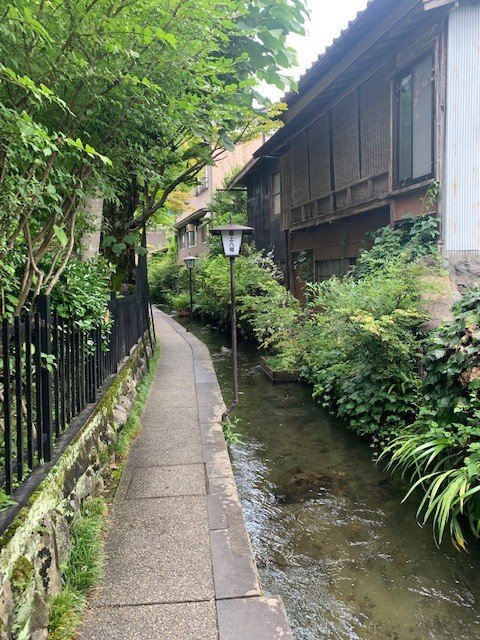
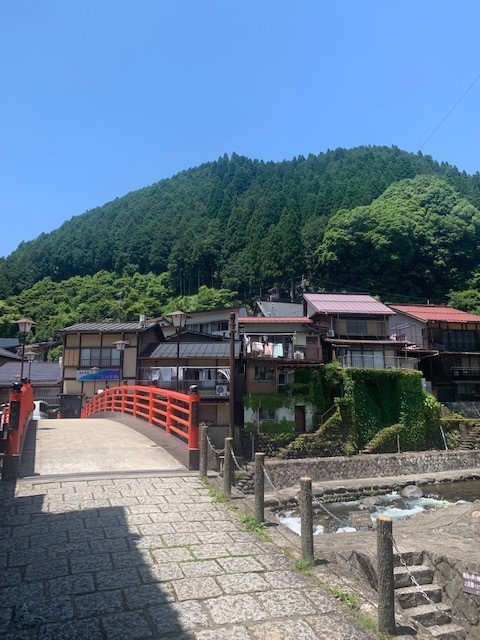
(Photos: Igawa Ko Michi, Kodara River and Shimizu Bridge.)
(All photos were taken by the author.)

